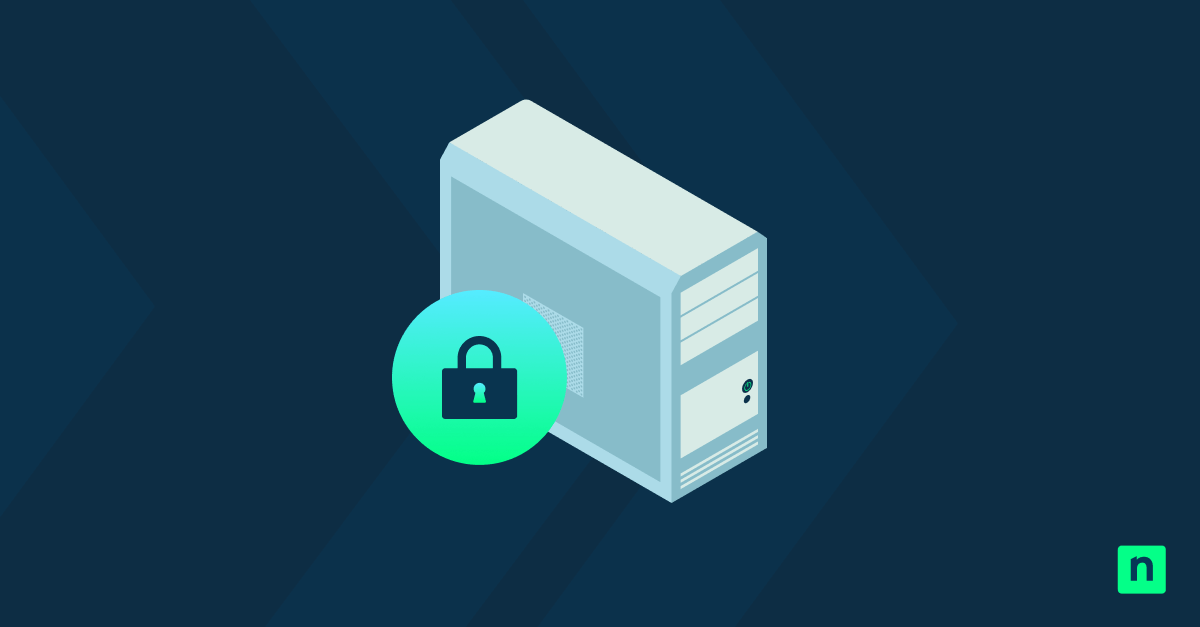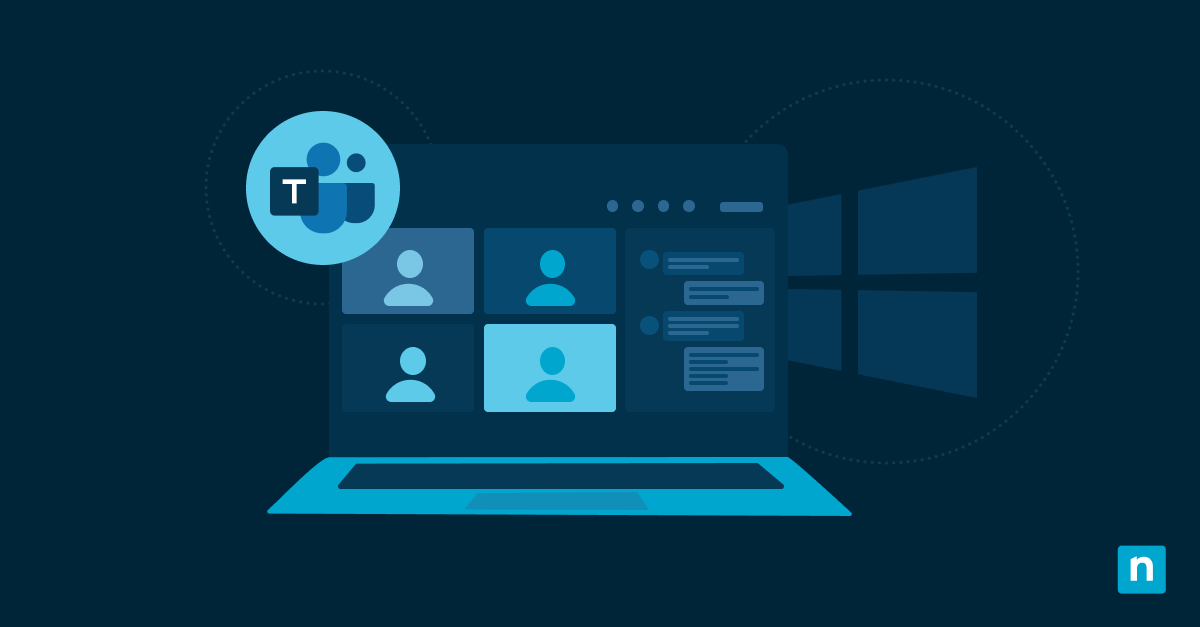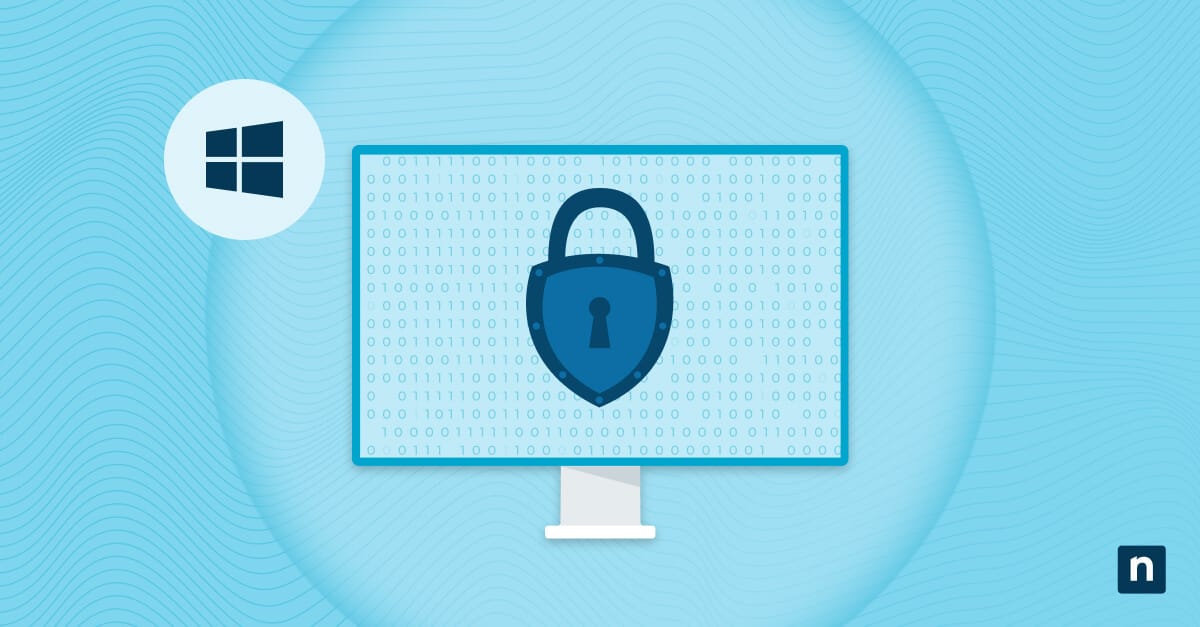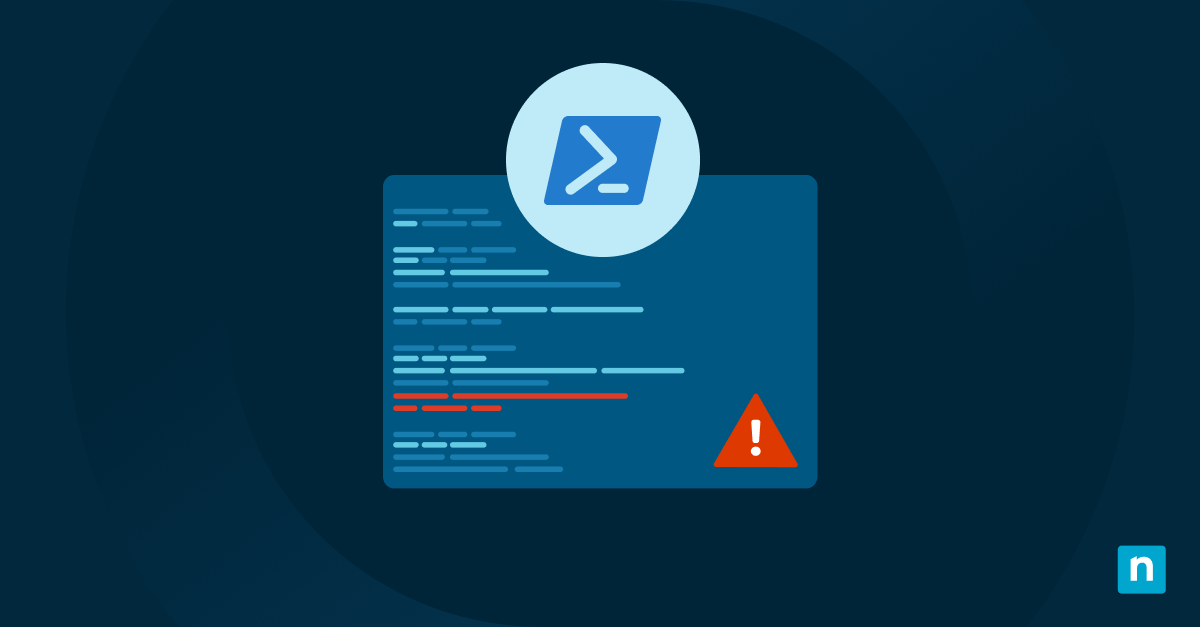Managed service providers (MSPs) and IT professionals always look for ways to reduce manual work and increase efficiency to simplify their tasks. To fill this need, Microsoft created Power Automate. This cloud-based service is a powerful solution that lets users automate routine tasks, streamline workflows, and connect different tools and services without needing complex coding. Keep reading to learn how to work smarter and faster with a Microsoft Power Automate workflow.
Ways to use Power Automate for MSP workflow automation
Microsoft Power Automate offers several methods to automate various tasks, depending on your environment, available tools, and needs. Here are six options with step-by-step instructions.
📌 Prerequisites:
- Microsoft 365 Business Premium or Microsoft Power Platform license
- Admin access to Microsoft Power Automate (web and desktop)
- Familiarity with Office 365, SharePoint, Exchange, and scripting tools
- Optional: Access to on-prem devices for hybrid workflows
💡 Tip: Check Things to look out for before proceeding.
📌 Recommended deployment strategies:
Method 1: Using Power Automate cloud flows (GUI)
This method lets users create cloud flows, which are online workflows initiated by events, schedules, or triggers from other services.
📌 Use Cases:
- Posting to Microsoft Teams when a new ticket is created in ConnectWise
- Auto-closing tickets in PSA when resolved in NinjaOne
- Sending email alerts when critical SharePoint lists are updated
- Escalating high-priority helpdesk emails to Slack
📌 Prerequisite: Access to Power Automate online
Steps:
- Visit https://make.powerautomate.com.
- On the left pane, click Create.
- On the right pane, under Start from blank, click Automated cloud flow.
- Give your flow a name and select a trigger (for example, “When a new email arrives” or “When a file is created”).
- In the new page, click the plus (+) icon under the trigger you created.
- Browse the options and add your desired conditional logic, approvals, or actions.
- Click Save.
- Click Test to test the flow.
- Publish and share it with your team.
Method 2: Using Power Automate Desktop
This method lets you automate actions on your Windows computer, such as clicking buttons, copying text, and interacting with software. It uses Power Automate Desktop (PAD), which allows for Robotic Process Automation (RPA) on Windows endpoints. It’s especially helpful for apps that don’t support online integration.
📌 Use Cases:
- Automatically opening and extracting data from legacy software
- Copying data between remote apps and Excel
- Simulating helpdesk tasks using keyboard or mouse automation
📌 Prerequisite: Downloaded Power Automate Desktop
Steps:
- Install Power Automate Desktop from the Microsoft Store.
- Launch the app and click the New flow button in the top-right corner.
- Name the flow and select the Create button.
- Use the visual designer to drag and drop steps and actions (such as Launch app, Click a button, Read screen text, and Send data to Excel) from the left pane to the main screen.
- Click Save.
- Select Run to test the flow within the app.
- Optional: Test again by triggering the flow using a cloud event or schedule.
Method 3: Using PowerShell with Power Automate
This method uses PowerShell scripts to trigger flows via webhooks. This tells Power Automate to start an action, which is helpful for hybrid automations.
📌 Use Cases:
- Notifying Teams when a critical server service fails
- Triggering alert workflows from scripts monitoring disk space
- Pushing data from scheduled scripts into cloud-based logs
📌 Prerequisites:
- Access to webhook URLs from Power Automate or Azure Logic Apps
- Microsoft 365 or Azure account
Steps:
- Copy your flow’s webhook URL from Power Automate or Logic Apps.
- Write a PowerShell script to trigger webhooks (sample below).
- Save and schedule the script using Windows Task Scheduler or NinjaOne.
Sample script for triggering a flow when a service fails:
| $uri = “https://your-flow-url” $body = @{ “event” = “CriticalServiceDown”; “device” = “Server1” } | ConvertTo-Json Invoke-RestMethod -Uri $uri -Method Post -Body $body -ContentType “application/json” |
This script sends a real-time alert that a critical service on “Server1” is down, by posting structured data to a remote API or webhook.
Method 4: Using the registry for trigger conditions (event-based logic)
Power Automate cannot be triggered directly from the Windows Registry. However, you can use Event Viewer to log custom events based on registry value changes, which can trigger flows via Logic Apps.
📌 Use Cases:
- Detecting when onboarding software is installed
- Tracking registry changes that reflect device compliance
- Monitoring security-critical settings
📌 Prerequisites:
- Access to the registry and Event Viewer
- A script to monitor registry changes
- Power Automate with Event Grid, or Azure Monitor
Steps:
- Create a custom script that monitors specific registry values, such as entries in this registry path:
HKEY_LOCAL_MACHINE\Software\MSP\DeviceStatus
This is used to reflect onboarding or compliance events from software installs.
- It should write a custom event log entry when it detects a change.
- Use Azure Monitor or Power Automate with an Event Grid trigger to detect and react to that event.
Method 5: Using Command Prompt (Invoke Power Automate webhooks)
This method triggers flows using Command Prompt or a .bat file. Although Command Prompt doesn’t support automation logic, it can use tools like curl or PowerShell to trigger a flow. This method is also useful for legacy systems and batch files and can integrate with older IT processes.
📌 Use Cases:
- Including commands in login scripts to report device status
- Triggering cloud workflows from old scripts
📌 Prerequisite: Webhook URL for your Power Automate flow
Steps:
- Get your flow’s webhook URL from Power Automate or Azure Logic Apps.
- Open Notepad, create a script using curl (sample below), and save it with a .bat extension.
- Run the batch file in Command Prompt or add it to an existing login/startup script.
- When run, the script sends a simple message to your Power Automate flow.
Sample curl script:
curl -X POST https://prod-123.westus.logic.azure.com/… -H “Content-Type: application/json” -d “{\”event\”:\”AgentDown\”}”
Method 6: Using Group Policy (Launch scripts or PAD flows)
Finally, admins can use Group Policy to start Power Automate Desktop flows or scripts that trigger cloud flows.
📌 Use Cases:
- Launching onboarding tools after imaging a device
- Running health checks on startup
- Automating license activation or compliance reminders
📌 Prerequisite:
- Access to Group Policy Management Console (GPMC)
- A saved PAD flow or PowerShell script
- Administrator access to the device or domain
Steps:
- Open the Group Policy Management Console (GPMC). Press Windows key + R, type “gpmc.msc,” and press Enter.
- On the left pane, navigate to: Computer Configuration > Windows Settings > Scripts (Startup/Shutdown)
- Add a script that runs a PAD flow or a webhook-triggering script, like: Start-Process “C:\Users\Public\Documents\PAD\MyFlow.exe”
- Apply the GPO to the desired group of devices.
⚠️ Things to look out for
| Risks | Potential Consequences | Reversals |
| Misconfigured or overactive triggers |
|
|
| Desktop automation fails |
|
|
| Data loss due to unlogged failures |
|
|
| API or flow usage limits exceeded |
|
|
| Security gaps due to shared or weak credentials |
|
|
| Flows modify or delete data unexpectedly |
|
|
What is Power Automate used for?
Microsoft Power Automate (formerly Microsoft Flow) is a tool that helps individuals and businesses save time, reduce errors, and connect systems more efficiently without requiring deep programming knowledge. It allows users to do the following:
- Automate repetitive tasks like sending emails when a form is submitted, moving files between folders or cloud storage services, like SharePoint to OneDrive, and posting alerts in Microsoft Teams when new documents are uploaded.
- Connect multiple apps, including Microsoft 365 (Outlook, Excel, Teams), third-party apps (Slack, Dropbox), and other custom systems.
- Create a trigger-based workflow, where a trigger starts the automation (like receiving an email) to perform actions (like saving the attachment or forwarding the message).
- Take advantage of desktop automation for on-screen activities that don’t have built-in integration options, like clicking through legacy apps, filling out forms, and copying and pasting data between software.
- Support IT and MSP workflows by simplifying tasks like automatically resolving or escalating support tickets, monitoring device compliance, launching scripts when systems go offline, and scheduling routine maintenance.
Additional considerations when using Power Automate
To avoid issues, you must be aware of a few best practices and limitations before building and deploying workflows in Microsoft Power Automate.
Security
Automated workflows often access sensitive data like tickets, email, files, or device status, so make sure to prioritize security. Always use service accounts and secure connections for API or webhook access.
Licensing
Power Automate comes with various licensing tiers, and not all features are available on the free plan. Power Automate Cloud features, like basic flows, are included with most Microsoft 365 Business subscriptions. PAD is free on Windows 10 and 11, but advanced features may require premium plans.
Error handling
Even well-designed flows can fail due to network errors, missing data, expired credentials, or service outages. To prevent failed triggers, always include error branching and fallback actions in workflows.
Scalability
What works for one user or machine might not scale well for dozens or hundreds. So use environment variables, loop controls, and connectors for enterprise-grade scalability.
Audit
It’s important to keep a record of your automations’ actions for IT service management (ITSM) and compliance purposes. Consider enabling logging within your flows, using Power Automate’s built-in “Run History” feature, and adding audit trail entries.
NinjaOne services that integrate well with Power Automate
NinjaOne integration offers a hybrid approach that can reduce overhead, minimize manual errors, and help MSPs scale operations with less effort. Here are specific features that may benefit Power Automate users:
| NinjaOne Feature | How it works with Power Automate | Sample use cases |
| Script deployment | Scripts can be written to trigger Power Automate webhooks after completion | Run a script to update software and trigger a flow that logs the result in SharePoint |
| Alert triggers | These alerts can initiate Power Automate flows, sending notifications or creating tickets | When a server’s disk space drops below 10%, trigger a flow that alerts the tech team via Teams |
| Ticketing system integration | Flows can auto-generate or update tickets in NinjaOne or connected PSA tools based on conditions | Automatically close a ticket in NinjaOne when a resolution email is received |
| Device inventory | Flows can use inventory data as input parameters for dynamic automation (e.g., apply policies based on device type) | Use Power Automate to assign compliance tasks based on device manufacturer or OS version |
| Policy scheduling | Power Automate flows can be launched on a schedule or in sync with NinjaOne policy execution windows | Run a Power Automate Desktop flow every Friday after NinjaOne finishes system cleanup |
Unlocking the full potential of automation
Microsoft Power Automate offers MSPs and IT pros a toolset to transform repetitive, time-consuming processes into smart, scalable workflows. With the help of cloud-based flows, desktop automation, and scripting integrations, service providers can deliver more consistent results to their clients. Just make sure to set up proper security practices and handle errors carefully to prevent common automation issues.
Related topics:








